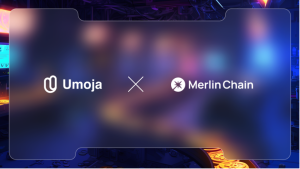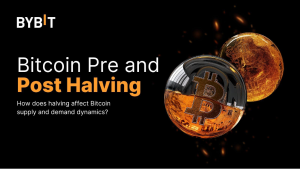The Future Of The Metaverse Is Multichain, But Its Users Must Be Unchained
The metaverse is evolving fast, emerging as a place that can be virtually visited by anyone to socialize, work, play games, build and more.

It’s closely entwined with the world of blockchain and crypto, which enables it to be decentralized and permissionless, meaning that users have self-ownership of both their assets and the future direction of metaverse platforms.
However, the infrastructure on which the metaverse resides is highly fragmented too, spread across multiple blockchain platforms designed for different use cases. This multitude of networks has arisen with the promise of solving problems around metaverse scalability, but it has led to a lot of friction between different chains, resulting in confusion for many users.
There is certainly a strong case to be made that blockchain is fundamental to the future of the metaverse, even if Facebook’s parent company Meta Platforms makes no mention of it. However, the use of monolithic blockchains results in users being restricted to those ecosystems. As a result, users only perceive the sense of freedom, but in reality they’re forced to rely on a limited number of apps and services within each metaverse.
Add to this the long list of complexities that blockchain introduces and it’s clear we have a problem. There’s the clunky user experience, the need for users to self-manage their private keys and crypto wallets. Then, as the metaverse becomes increasingly multichain, users are further burdened with issues of cross-chain friction.
If we hold metaverse users captive on just one blockchain and then confuse them with technical processes, that is not going to encourage greater participation. The opposite would happen. But what if we could somehow abstract away these cross-chain mechanisms in such a way that they’re invisible to the user?
Why The Metaverse Will Be Multichain
There’s a common narrative in crypto circles that one blockchain will ultimately rise above all the others, providing a solution to the myriad of problems that plagues the space today. By solving issues around user-friendliness, scalability, security, gas fees and transaction times, there will be one blockchain that emerges to rule them all.
It’s an extremely unrealistic scenario that will probably never happen. Every time a shiny new blockchain platform for the metaverse arrives, loaded with promise, it leads to the arrival of new flaws and problems that must be overcome. New chains are made to solve these new issues, and yet more problems arise. And so the cycle of innovation goes on and on.
These new blockchains do offer some interesting solutions and benefits, hence they become fertile breeding grounds for numerous developers to experiment with new metaverse projects and decentralized applications. That fuels greater interest in the metaverse, prodding users to further explore the world of Web3 and the multitude of other blockchains that support it.
Different chains have different strengths and play host to different metaverse worlds, and users soon understand the need to be able to move across these networks. Mobility across chains is a must, as it is the only thing that enables true metaverse freedom.
At present, so-called blockchain bridges are the go-to mechanism for moving digital assets across chains. It’s a smart piece of technology that has unfortunately run into numerous problems, around the user experience, onboarding and so on. The vast majority of metaverse users aren’t technically minded enough, and don’t want to learn how to deal with network bridges. They don’t want to have to manage multiple wallets and tokens on different chains. It’s a steep learning curve that causes many new users to simply give up.
Another problem with blockchain bridges is security. It’s practically non-existent, or so the headlines would have you believe. It’s certainly worrying, with an alarming number of hacks that have taken advantage of vulnerabilities in bridges to steal millions of dollars’ worth of user’s funds. In February, attackers hacked the Wormhole bridge and made off with $321 million worth of digital assets. Numerous influential persons in the crypto community, such as Ethereum co-founder Vitalik Buterin, have voiced their concerns around the security of network bridges.
Nonetheless, the metaverse is accelerating towards a multichain future, and so the need to connect networks becomes ever more pressing. So the user experience has to improve, together with security.
Is Layer 2 The Solution?
In order to accelerate metaverse adoption we need to declutter and simplify the cross-chain experience, and that means abstracting away the technical side and providing a seamless transition for users.
When someone orders a product from Amazon in a couple of clicks, it will very often arrive at their house the very next day. The metaverse will need to replicate this experience, providing a way to move across the multitude of blockchains it will live on that’s just as simple, with the technical nuts and bolts hidden behind the scenes.
This is one of the key goals of the only multichain L2 “Boba Network”, which believes Web3 users should be able to access any kind of dApp and service on any blockchain they like, just as if they were interacting with a Web2 application. Tasks such as bridging funds and NFTs, calling dApp smart contracts and so on should be handled entirely in the background, by the application.
Not only must the experience be seamless, but it should be instantaneous, cheap and totally secure. Boba Network does this by integrating with existing blockchains and offloading transactions onto a second layer, where they can be processed in seconds and securely bridged across networks. Boba Network makes it possible for existing blockchains to scale dramatically while interacting with any other network. It also boosts security by using the same structures as existing blockchains, eliminating the need for a bridge. Gas fees, which can be paid in the chain’s native cryptocurrency or Boba’s very own BOBA token, are also kept to a minimum.
At present in the metaverse, the clunky user experience is often viewed as being the price of admission into these decentralized, virtual experiences of the future. But that’s an unsustainable mindset, and one that will simply push people away. If we want to make the metaverse truly inclusive and available to all, a solution must be found.
With Layer 2 networks, it becomes possible for a multichain metaverse to appear effectively chainless, allowing users to move their avatars and assets across networks with a few simple clicks. The metaverse must be unchained to enable a seamless multichain experience, and only then will it achieve its full potential.









